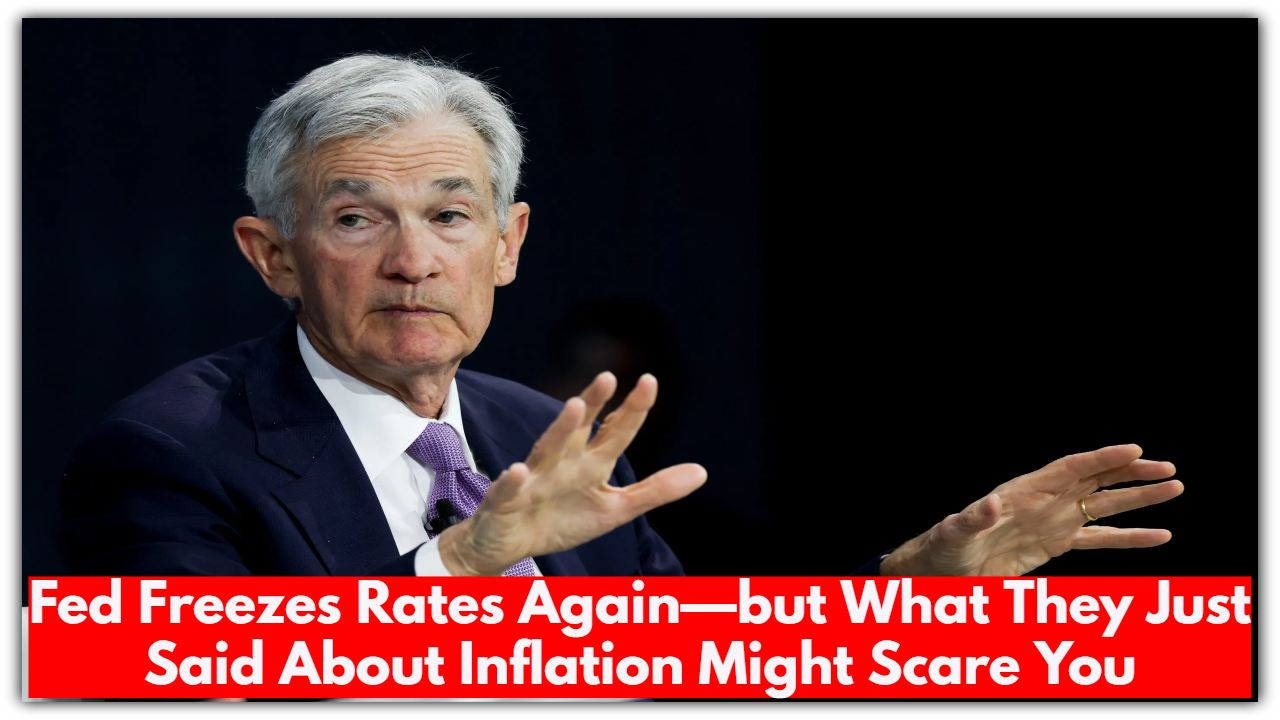Fed Freezes Rates Again—but What They Just Said About Inflation Might Scare You
The Federal Reserve made its latest move in June 2025—and while they didn’t raise or lower interest rates, the message they sent was loud and clear: inflation is still a problem.
Rates stayed put, just as expected. But behind that calm decision is a lot of growing concern about rising prices, global uncertainty, and what’s next for the economy.
Here’s a simple breakdown of what happened, and what it means for your wallet.
What Exactly Did the Fed Decide?
On June 18, 2025, the Fed kept its benchmark interest rate unchanged at 4.25% to 4.50%.
This marks the fourth straight meeting where they’ve chosen not to move the needle on rates. No hikes, no cuts—just holding steady.
Fed Chair Jerome Powell said the decision was all about giving the economy more time. With inflation still hovering above the target, the Fed isn’t ready to make any big moves just yet.
Inflation Is the Real Story Here
While the rate decision didn’t surprise anyone, what did get people’s attention was the Fed’s updated forecast.
Here’s what they’re now expecting:
-
Inflation could climb to 3.0% by the end of 2025, higher than their earlier prediction of 2.7%
-
Economic growth is likely to slow to just 1.4% this year
-
Unemployment may rise to about 4.5%
That’s not exactly a rosy picture. The Fed is signaling that we’re not out of the woods yet, especially when it comes to the cost of living.

Why No Rate Cut Yet?
If inflation is still an issue and the economy is cooling, why not help people out by cutting rates?
The short answer: uncertainty.
One of the biggest concerns right now is the impact of new tariffs and trade policies. There’s worry that these changes will push prices higher, especially on imported goods. The Fed wants to avoid making the situation worse by cutting rates too soon.
Chair Powell put it plainly: the Fed needs to see “more progress” before feeling confident enough to lower borrowing costs.
Will Rates Go Down Later This Year?
That’s still on the table—but not guaranteed.
Earlier this year, the Fed was expecting to cut rates twice by the end of 2025. But now, with inflation still elevated and uncertainty rising, that prediction is looking shaky.
Some officials still support cuts later this year. Others are suggesting just one. And a few have even hinted that we might not see any cuts at all until 2026.
It’s a wait-and-see situation, and the Fed is in no rush to take chances.
What This Means for You
For everyday people, the Fed’s decision will affect your money in a few key ways:
-
Mortgage rates are likely to stay high for now. If you’re waiting to refinance or buy a home, it might be a while longer before rates drop.
-
Credit card and loan interest will remain expensive, since they usually follow the Fed’s rate.
-
Savings accounts and CDs will continue offering higher yields than in recent years. That’s good news for savers.
-
If you run a business or are looking to invest, this “wait-and-see” approach from the Fed means continued caution on borrowing costs.
The Fed didn’t surprise anyone with its June decision, but its tone is more serious than before.
They’re watching inflation closely. They’re not ready to make cuts. And they’re being extra careful because they know how fragile the economy feels right now.
If you’ve been hoping for lower rates, you might need to hang on a bit longer. The good news? Once inflation truly starts to cool, rate cuts could come quickly. But until then, patience is the name of the game.


Comments are closed, but trackbacks and pingbacks are open.